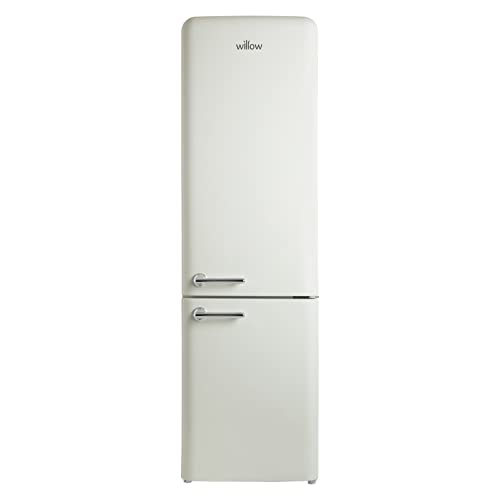What Fridges And Freezers Experts Want You To Be Educated
Understanding Fridges and Freezers: The Essential Kitchen Appliances
Refrigerators and freezers are two of the most necessary devices in modern-day kitchen areas. These appliances serve an important role in food preservation and waste decrease by guaranteeing that disposable items stay fresh and safe for consumption. This article looks into the numerous types of fridges and freezers, their performances, and essential factors to consider for selection and maintenance.

Types of Refrigerators
The marketplace provides a variety of refrigerator types, each designed to satisfy various consumer requirements. Below is a list of the most typical types of fridges:
-
Top-Freezer Refrigerators
- Most common type.
- Freezer compartment is located above the refrigerator area.
- Generally more economical and energy-efficient.
-
Bottom-Freezer Refrigerators
- Freezer is located at the bottom.
- Allows easier access to fresh products at eye level.
- Often includes pull-out drawers for better organization.
-
Side-by-Side Refrigerators
- Refrigerator and freezer areas are adjacent.
- Perfect for narrow kitchen areas and allows simple access to both compartments.
- Often comes with water and ice dispensers.
-
French Door Refrigerators
- Combines a bottom freezer with double doors at the top.
- Offers ample storage and trendy styles.
- Typically includes functions like temperature-controlled drawers.
-
Compact Refrigerators
- Smaller size suitable for restricted areas.
- Typically utilized in dormitory rooms, little homes, or as secondary fridges.
Table 1: Comparison of Refrigerator Types
| Type | Benefits | Drawbacks | Common Size |
|---|---|---|---|
| Top-Freezer | Budget friendly, energy-efficient | Less hassle-free access to the freezer | 14-30 cu. ft. |
| Bottom-Freezer | Simpler access to fresh food | Freezer can be more difficult to arrange | 19-30 cu. ft. |
| Side-by-Side | Easy gain access to, water/ice dispenser | Narrow vs. storage space | 22-30 cu. ft. |
| French Door | Elegant, spacious, organized | More pricey | 20-30+ cu. ft. |
| Compact | Space-saving, portable | Minimal storage | 1.7-5.5 cu. ft. |
Types of Freezers
Freezers are a similarly important device for food conservation. They are available in numerous styles developed to fit different home requirements. Consider the following types:
-
Upright Freezers
- Operate like a standard refrigerator with vertical storage.
- Easier to arrange with shelves and compartments.
-
Chest Freezers
- Large, horizontal design generally providing more storage area.
- Maintains temperatures better throughout power interruptions.
- More energy-efficient than upright models.
-
Portable Freezers
- Compact units perfect for outdoor activities or little areas.
- Often used for camping trips or as short-lived storage.
Table 2: Comparison of Freezer Types
| Type | Benefits | Downsides | Common Size |
|---|---|---|---|
| Upright Freezer | Much easier to arrange | Less energy-efficient, more floor space | 5-20 cu. ft. |
| Chest Freezer | Holds more items, energy-efficient | Harder to organize | 5-25 cu. ft. |
| Portable Freezer | Compact and flexible | Restricted storage capability | 1-10 cu. ft. |
Key Features to Consider
When selecting a fridge or freezer, customers ought to keep in mind numerous features that can enhance functionality:
- Energy Efficiency: Look for models with the ENERGY STAR certification to save money on electricity costs.
- Storage Capacity: Evaluate storage needs based on household size and consuming habits.
- Temperature Control: Some home appliances provide digital controls for precise temperature settings.
- Adjustable Shelving: Customizable shelving enables optimum organization.
- Water and Ice Dispenser: Offers convenience however can take up important area inside.
- Noise Level: Sound ratings can affect convenience, specifically in open-concept homes.
Advantages and disadvantages of Having a Fridge and Freezer
While fridges and freezers are indispensable technologies, they likewise have specific advantages and disadvantages:
| Pros | Cons |
|---|---|
| Protect food life-span and lower waste | Need regular upkeep |
| Permit bulk buying and meal prepping | Can be costly to purchase and run |
| Offer benefit and quick access to food | Occupy significant kitchen area space |
Maintenance Tips
To guarantee longevity and optimal efficiency of fridges and freezers, think about the following upkeep suggestions:
- Regular Cleaning: Clean the exterior and interior regularly to avoid accumulation of dirt and germs.
- Inspect Seals: Inspect door seals regularly for leaks to keep efficiency.
- Temperature level Settings: Keep the fridge at 34-38 ° F and the freezer at 0 ° F for ideal food conservation.
- Thaw as Needed: Chest freezers should be thawed frequently to maintain effectiveness.
- Clear Air Vents: Ensure that air flow isn’t blocked to improve energy efficiency.
FAQs About Fridges and Freezers
Q1: How long can food be stored in a freezer?A: Most foods can be kept in a freezer for numerous months. Meats and poultry typically last 4-12 months, while veggies can last up to 8-12 months.
Q2: How frequently should I clean my fridge and freezer?A: It is suggested to clean your fridge and freezer every 3 to 6 months, or as required when spills occur. Q3: Can I put hot food straight in the fridge?A: It is advised to cool hot food to space temperature level before positioning it in the fridge freezer to Buy to avoid
raising the temperature level inside the home appliance. Q4: Why is my fridge running constantly?A: This might be due to a malfunctioning thermostat, clogged up coils, or door seals that aren’t working effectively. Fridges and freezers are important
possessions to modern-day households, supplying essential services for food storage and preservation.
Comprehending the numerous types, functions, and maintenance requirements can assist consumers select the ideal home appliances for their requirements and maximize their functionality. Embracing energy-efficient models not just supports sustainable practices however also adds to significant savings on utility costs, making informed options more important than ever.


